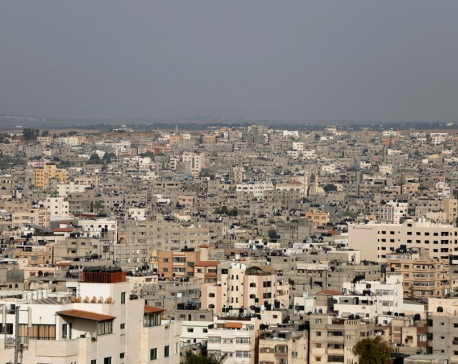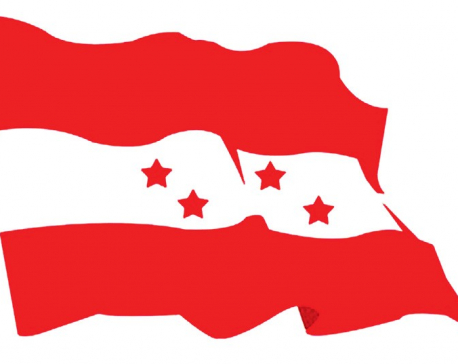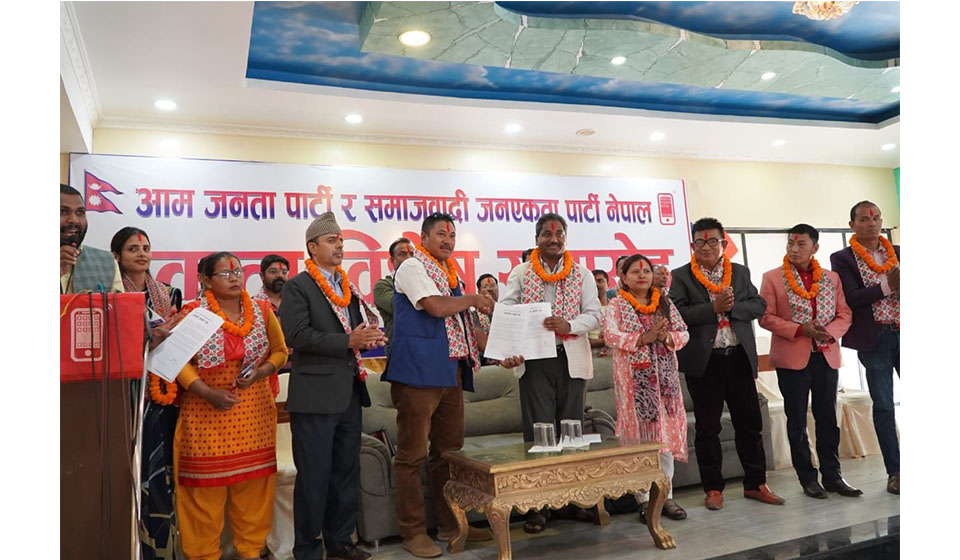
OR
Capital outflow worth Rs 47.35 billion for foreign studies in five months of current FY
Published On: January 12, 2024 04:32 PM NPT By: Dilip Paudel

KATHMANDU, Jan 12: The increase in the number of Nepali students going abroad to pursue foreign education is contributing to significant capital outflows.
According to the data released by the Nepal Rastra Bank (NRB) on Thursday, the students going to study abroad from Nepal have taken Rs 47.35 billion in five months of the current fiscal year 2023/24.
The students have access to job opportunities along with their academia, so there is an increase in the number of students going abroad. Following this, the outflow of capital to foreign lands has also increased. In the five months of the last fiscal year, Rs 28.81 billion were released for education, which increased by Rs 18.54 billion during the same period of this year.
With the recent uptick in the outflow of money, there has been a notable improvement in other financial indicators. With the increase in the number of foreign migrants, the remittance has also increased.
NRB’s report on ‘Current Macroeconomic and Financial Situation of Nepal’ shows that the foreign currency reserves as of mid-December soared 13.6 percent in the past five months of the current fiscal year. In monetary measures, the landlocked country got an additional net amount of foreign currencies worth USD 1.6 billion in the review period.
In terms of the Nepali currency, the country had a total foreign currency reserve of Rs 1.767 trillion as of mid-December. This was an increase from Rs 1.539 trillion in mid-July, while the data shows a growth of Rs 122 billion just in the past one month.
According to economists, an increase in foreign currency reserves provides a cushion to import-based countries like Nepal. The landlocked country maintains an adequate supply of its majority of consumer goods including food items and equipment for its development projects via imports.
The notable rise in foreign currency reserves has been attributed to a whopping rise in the remittance inflows during the review period. According to the NRB records, remittance inflows increased 27.6 percent to Rs 613.25 billion in the review period compared to an increase of 23 percent in the same period of the previous year.
In the US Dollar terms, remittance inflows increased 24.5 percent to 4.62 billion in the review period compared to an increase of 13.1 percent in the review period last year.
During mid-July and mid-December, a total of 277,592 persons took approval for foreign employment. These include 173,555 individuals receiving government approval for the first time, while 104,037 individuals got renewal for their entry in foreign companies of their employment destinations.
In the review period, imports declined by 3.4 percent to Rs 642.21 billion. On the other hand, net transfer increased 26.3 percent to Rs 669.74 billion.
As a result of the positive growth of net transfer and a fall in imports, the country’s current account remained at a surplus of Rs.140.23 billion in the review period. The current account stood at a deficit of Rs 41.21 billion in the same period last year.
Likewise, the balance of payments (BoP) remained at a surplus of Rs 210.59 billion against a surplus of Rs 45.87 billion in the review period last year. In terms of the US Dollar, the BoP surplus stood at 1.58 billion against a surplus of 346.8 million last year.
You May Like This

Nepalis near Gaza strip relocated to secured place
KATHMANDU, Oct 11: All 55 Nepali students working in an agriculture farm along the Israel-Gaza border have been relocated to... Read More...

NC demands govt rescue the students who were attacked in Dehradun, India
KATHMANDU, Oct 29: The main opposition party Nepali Congress (NC) has demanded that the government take the incident of Nepali... Read More...

Finding path to US colleges
It is far more difficult for international students to get financial aid and scholarships than it is for US... Read More...


Just In
- Sunkoshi-Marin Diversion Project’s tunnel construction nears completion, breakthrough scheduled for May 8
- Govt tightens security arrangement for Third Investment Summit 2024
- Pesticide residue found in vegetables in Nepalgunj
- Aam Janata Party and Samajwadi Jana Ekata Party merge
- 1,600 participants confirmed for Nepal Investment Summit
- Ilam-2 by-elections held peacefully, vote count likely to start tonight
- NEA schedules five-day power cut across Kathmandu Valley for underground cable installation
- Hundreds of passengers including foreign tourists in distress as poor visibility halts flights to and from PRIA







-1200x560-wm_20240427144118.jpg)






Leave A Comment